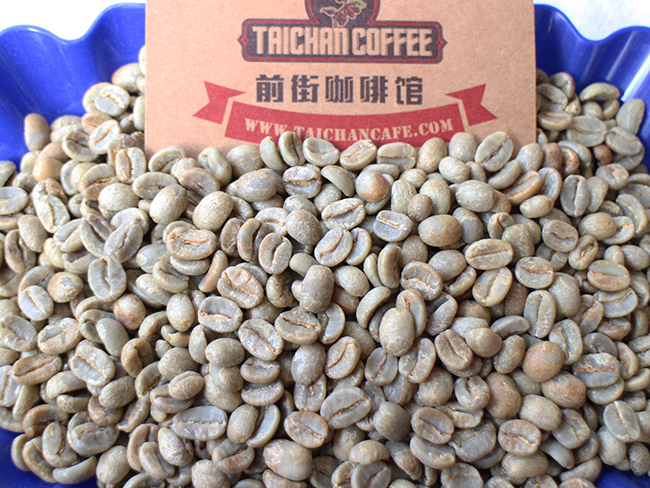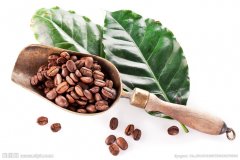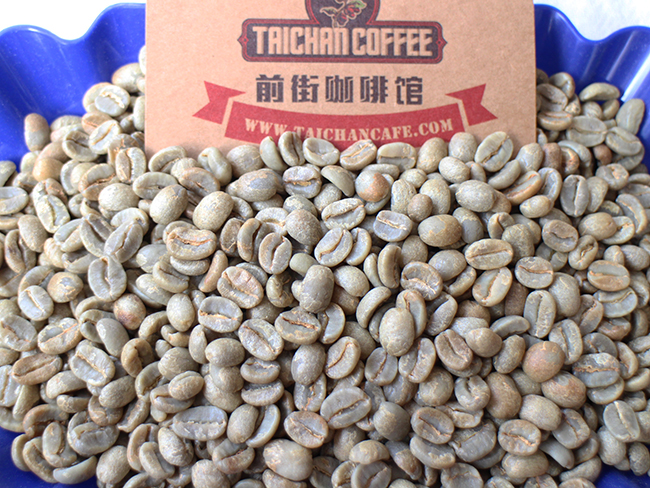Wholesale price of imported boutique coffee and raw beans in Ethiopia Yega Xuefei Sun Banki
There are eight main producing areas of Ethiopian coffee: Ekempti, Limu, Illubabor, Djimma, Harrar, Teppi/Bebeka, Sidamo, Yirgacheffe.
Ethiopian coffee is highly rated in Taiwan, especially the three well-known producing areas of Ethiopia, namely Harrar, Sidamo and Yirgacheffe. Sidama province is located in the south of Ethiopia, Arsi province in the north, Bale province in the east and GamuGofa province in the west. The jurisdiction of Sidama province includes two well-known producing areas, Yirgacheffe and Kochere. The industry is dominated by agriculture, and the coffee growing area is located around the East African Great Rift Valley (GreatRiftValley). Banchi Magi producing area (BenchMaji) is located in southern Ethiopia, is the country's two largest primeval forest coffee (Forest), one is Banchimaji, the other is the coffee producing area of KafaFrost.
There are four types of coffee exported from Ethiopia: virgin forest coffee (forest), semi-virgin forest coffee (semi-forest), garden coffee (garden) and manor large area coffee (plantation).
Primeval forest coffee (forest) accounts for about 10 per cent of all coffee production and comes from southern and southwestern Ethiopia, such as (Bale,WestWolega,Bench-Maji,Keficho-Shekicho,MetuandJimma). Primeval forest coffee has a natural resistance to diseases and insect pests, organic and dry aroma top high-quality flavor.
Semi-primeval forest coffee (semi-forest) is coffee farmers in the primeval forest coffee trees have special care, there are pruning coffee trees and weeds, as well as shade trees pruning, fruit ripening, then harvested and sold, this type of coffee accounts for about 35% of the total output.
Garden Coffee (garden) is now the main force of Ethiopian coffee. It is near the homes of small coffee farmers. Each small coffee farmer family has an average planting area of less than one hectare. These small farmers form numerous cooperatives of different sizes, which are also concentrated in the south and southwest, as well as in the east (Sidamo,Gedeo,SouthandNorthOmo.Hararghe,WolegaandGurageZones,EastandWest.). This type of coffee accounts for about 50% of all production.
Only the government system can have the financial resources for the cultivation of large-area plantation coffee, which accounts for only about 5% of all production.
This batch is the tanning class, the Magi G3 belongs to the primeval forest coffee (forest), is an organic and natural coffee, it comes from the Banqi Maggie Forest Coffee production Farmers Cooperative Union (BenchMajiForestCoffeeProducerFarmers') CooperativeUnionLtd) export, this company is due to 64 major cooperatives and set up an export company, this life bean appearance, consistency, freshness to dry aroma and flavor are excellent, in the dry aroma performance is very top, flavor features: Bordeaux honey, ripe fruit, spices, wine, dark chocolate. Light fermented wine, delicate fruit acidity, berry aroma, cocoa flavor, clean and balanced taste, long and lively fruit flavor.
Country: Ethiopia
Grade: G3
Production area: Banchi Magi primeval forest
Altitude: 1500-1700 m
Treatment: insolation
Varieties: Typica, Heirloom
Producers: centralized treatment of small farmers' harvest
Flavor: jackfruit, spices, wine

Important Notice :
前街咖啡 FrontStreet Coffee has moved to new addredd:
FrontStreet Coffee Address: 315,Donghua East Road,GuangZhou
Tel:020 38364473
- Prev

Mocha coffee drinks coffee imported fresh roasting chain stores specialize in concentrated and fragrant boutique Italian style
CafeMocha is one of the oldest coffee, its history can be traced back to the origin of coffee. It is a mixture of Italian espresso, chocolate sauce, whipped cream and milk. Mocha gets its name from the famous port of Mocha. In the 15th century, the outward transportation industry of the whole coffee country in Central and East Africa was not prosperous. The Yemeni Mocha was the main export port near the Red Sea at that time. At that time, as long as the coffee was concentrated in
- Next

What is washing treatment? Panamanian Poquet Coffee Raw Bean Caesar Louis Manor Coffee Bean
Coffee was introduced into Panama in 1780, when Europeans introduced the first Typica tree species. After that, this mysterious and strange drink conquered the senses of Panamanians, and the local people began to grow it widely. Panamanian Caesar Lois (CasaRuiz,S.A.) Manor, founded in 1920, is located in the Boquete producing area of BaruVolcano Volcano.
Related
- Guji coffee producing area of Guji, Ethiopia: Humbela, Shakiso, Wulaga
- What is the most expensive variety of Qiloso in BOP multi-variety group?
- How to store the coffee beans bought home?
- Why are Yemeni coffee beans so rare now?
- Ethiopian Sidamo all Red Fruit Sun Sun Santa Vini Coffee beans
- SOE is mostly sour? What does it mean? Is it a single bean? what's the difference between it and Italian blending?
- Is Italian coffee beans suitable for making hand-brewed coffee?
- How to choose coffee beans when making cold coffee? What kind of coffee beans are suitable for making cold coffee?
- Just entered the pit to make coffee, what kind of coffee beans should be chosen?
- Can only Japan buy real Blue Mountain Coffee? What are authentic Jamaican Blue Mountain coffee beans?

